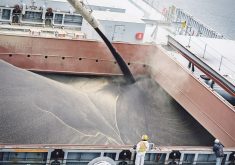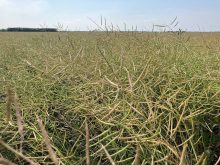Markets supported by seeding fears can fall if summer weather turns fine.
Snow was expected in the central and northern Prairies this week, a development we don’t need.
There already is a lot of snow in most of the Prairies and in the U.S. Upper Midwest. Only southern Alberta looks like it will be spared a heavy runoff this spring.
March has roared in like a lion; we’ll see if it goes out like a lamb. Alas, the woolly creatures might be shivering because the La Nina weather system in the Pacific has not yet dissipated.
Read Also

Short rapeseed crop may put China in a bind
Industry thinks China’s rapeseed crop is way smaller than the official government estimate. The country’s canola imports will also be down, so there will be a lot of unmet demand.
The clearest effects of the current La Nina were in December-January when Argentina suffered drought and Australia flooding.
Most models show the La Nina weakening to neutral by late spring, but there is a small chance it could linger into summer.
For months we have worried that a lingering La Nina would cause a cool spring in Canada that would impede seeding. That fear is providing strong support to canola prices.
The danger of a bad spring also applies to northern parts of the U.S. corn growing region.
Analysts raise the potential for a repeat of 2008, also a La Nina year, when a cold, wet spring delayed corn seeding, helping to push corn to its record peak of $7.65 US per bushel. In May that year, analysts speculated delayed seeding would knock corn yields down seven percent.
But tenacious U.S. farmers got their crops in the ground and a combination of good seed genetics and lucky summer weather produced an average U.S. yield of 153.9 bushels per acre, up two percent from the year before.
The improved corn crop and global financial melt down caused crop prices to tank. By December, corn bottomed at less than $3 per bu.
The lesson is that although current crop prices are down from recent highs, they are still strong because of the seeding worries.
But farmers will seed anything they can and with luck can get good crops even after a bad start.
And events outside the grain market, like soaring fuel prices caused by unrest in the Arab world, can sap demand.
It is a goodidea to consider marketing options that limit your risk.
———
subscriber section=markets, crops, news














